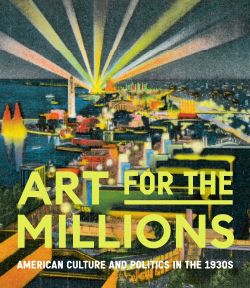[Demonstration, San Francisco]
Dorothea Lange American
Not on view
Dorothea Lange is most widely known for a single photograph, "Migrant Mother," a portrait of a troubled farmer surrounded by her three children, an iconic image that to many represents the essential tragedy of the Great Depression. The picture was made in a California migrant camp in March 1936, while Lange was working under federal contract for President Roosevelt's Resettlement Administration (RA), later the Farm Security Administration. Lange was the first of eleven photographers to join the RA, a New Deal agency whose purpose was to document the plight of the rural poor and the efforts made by the government to assist needy farmers.
When she was eighteen, Lange trained to be a portrait photographer in New York City with, among others, Arnold Genthe, a Pictorialist best known for his studies of Isadora Duncan. In 1918, Lange moved to San Francisco and soon opened her own portrait studio, which she operated for more than ten years. It was only after the stock market crash in 1929 and the onset of the Depression that Lange began to photograph unemployed laborers--the documentary work that eventually secured her position with the RA in the summer of 1935.
In 1932, Lange left her studio to photograph what was just outside her door, a rapidly growing population of homeless, mostly migrant workers crowding the streets of the city. Within the year she had virtually abandoned her commercial work to make what her first husband, Maynard Dixon, described as photographs of the forgotten man. Lange photographed labor strikes and other mass demonstrations with an uncanny ability to isolate individuals without losing the context of the crowd. Placards that advocate everything from "Defend the Chinese Soviets" to "Down with Sales Tax" dominate her pictures, which collectively document the causes of the American left in the 1930s. Although Lange was never a Communist, her best work of this period has all the graphic power and emotional charge of Bolshevik poster art: bold strokes, expressive type, and universal symbolism.
This photograph was made in 1933, most likely on May Day, the traditional day for international labor rallies. A man looks away from the camera, his back to a banner that identifies his cause. The low viewpoint creates a sense of monumentality, thrusting the worker against the sky and boldly sculpting his head. The exclamation point painted on the banner strikes the same chord as the daggerlike shadow that cuts across it, spearheading the emphatic and desperate imperative: FEED US!
Due to rights restrictions, this image cannot be enlarged, viewed at full screen, or downloaded.

